| Home | Nature Weekly Index |
27 March 2016 | Walk at the Park |
It had been a really hot month. Due to domestic reason, I was not able to go for any field trip since the beginning of this year, not even the park just at my doorstep. On Good Friday holiday this week, I finally got to spend around 2 hours at the nearby park. The first thing that surprised me was the disappearance of the mosquitos, even near the bushes. The hot weather was unlikely to be the cause. In many areas of the park, undergrowth had been cleared and lower branches of trees trimmed. It should be part of the action taken to clear up the mosquito habitat since my area was listed as one of the dengue clusters.

 The second surprise, which is unlikely to be noticed by most people, was the disappearance of the
Cocoa Black Ant (Dolichoderus thoracicus).
This ant used to be everywhere in the park and in large numbers. In June last year, it even
migrated to my balcony area. Strangely, not a trace of this ant
can be found now. The most visible ant in the park now is the
Black Crazy Ant (Paratrechina longicornis).
A male winged ant was seen mingling with a colony of migrating Black Crazy Ant.
The second surprise, which is unlikely to be noticed by most people, was the disappearance of the
Cocoa Black Ant (Dolichoderus thoracicus).
This ant used to be everywhere in the park and in large numbers. In June last year, it even
migrated to my balcony area. Strangely, not a trace of this ant
can be found now. The most visible ant in the park now is the
Black Crazy Ant (Paratrechina longicornis).
A male winged ant was seen mingling with a colony of migrating Black Crazy Ant.
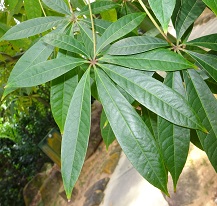
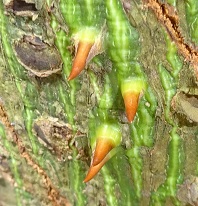 The third surprise was the discovery of a young
Kapok tree (Ceiba pentandra) by the side of a concrete footpath.
I did notice the plant many months back when it was less than a metre tall. However, I had always thought that it was a
Tapioca plant (Manihot esculenta) since people were growing all kind
of crops in that area. I was fooled by the leaves of the young plant. When I approach the tree, I was still wondering why
this tapioca was unusually tall and with such thick trunk. While examining the trunk, I saw the thorns on it which solved
the mystery. Hopefully, this lone Kapok tree will be left alone to allow it to grow into a gigantic tree in the not too
distance future.
The third surprise was the discovery of a young
Kapok tree (Ceiba pentandra) by the side of a concrete footpath.
I did notice the plant many months back when it was less than a metre tall. However, I had always thought that it was a
Tapioca plant (Manihot esculenta) since people were growing all kind
of crops in that area. I was fooled by the leaves of the young plant. When I approach the tree, I was still wondering why
this tapioca was unusually tall and with such thick trunk. While examining the trunk, I saw the thorns on it which solved
the mystery. Hopefully, this lone Kapok tree will be left alone to allow it to grow into a gigantic tree in the not too
distance future.
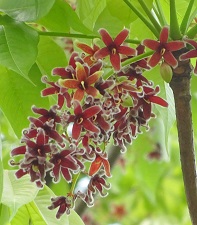
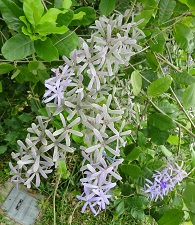 Two plants in the park were flowering profusely due to the prolonged hot weather. They rarely flower if temperature is
to be cooler. One of them was a tree, Wild Almond (Sterculia foetida) and
the other was a climber, Sandpaper Vine (Petrea volubilis). Both were
cultivated.
Two plants in the park were flowering profusely due to the prolonged hot weather. They rarely flower if temperature is
to be cooler. One of them was a tree, Wild Almond (Sterculia foetida) and
the other was a climber, Sandpaper Vine (Petrea volubilis). Both were
cultivated.
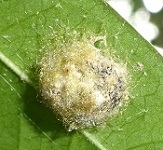
 Two nest-like structure were spotted beneath some leaves. One was likely to be the egg sac of spider. The other set was
10 rounded structures with holes all over them that looked like bug eggs.
Two nest-like structure were spotted beneath some leaves. One was likely to be the egg sac of spider. The other set was
10 rounded structures with holes all over them that looked like bug eggs.
The park originally had an extended open land with low bushes. That piece of land had since been levelled 2 years back and used for construction of housing flats. Sadly, Nature had to make another retreat.